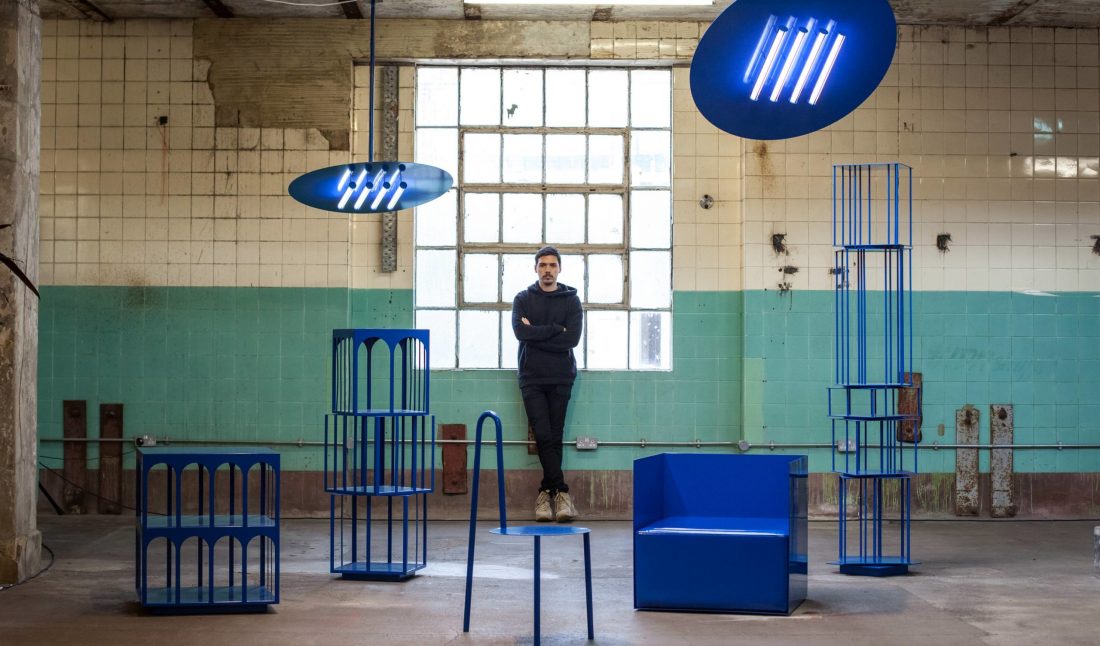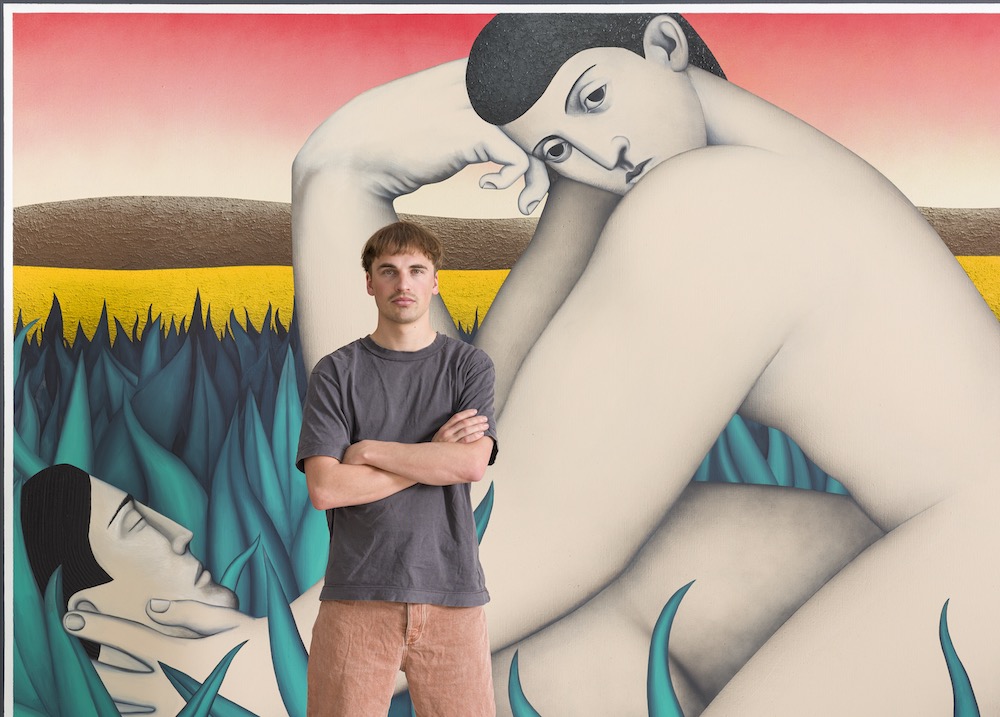This spring Harry Nuriev has eight shows going on. The founder of the design firm Crosby Studios, which is based in New York and Moscow, recently expanded his practice beyond design and furniture to art. At Design Miami/ last December, he debuted a series of sculptural works inspired by Russian architecture, industry, and craft.
One of those eight exhibitions he’s working on is “6 Fears” at Dallas Contemporary. The solo show features all new work, including a motion-sensored, rainbow-drawing boom gate and robots that both clean and scratch glass panes.
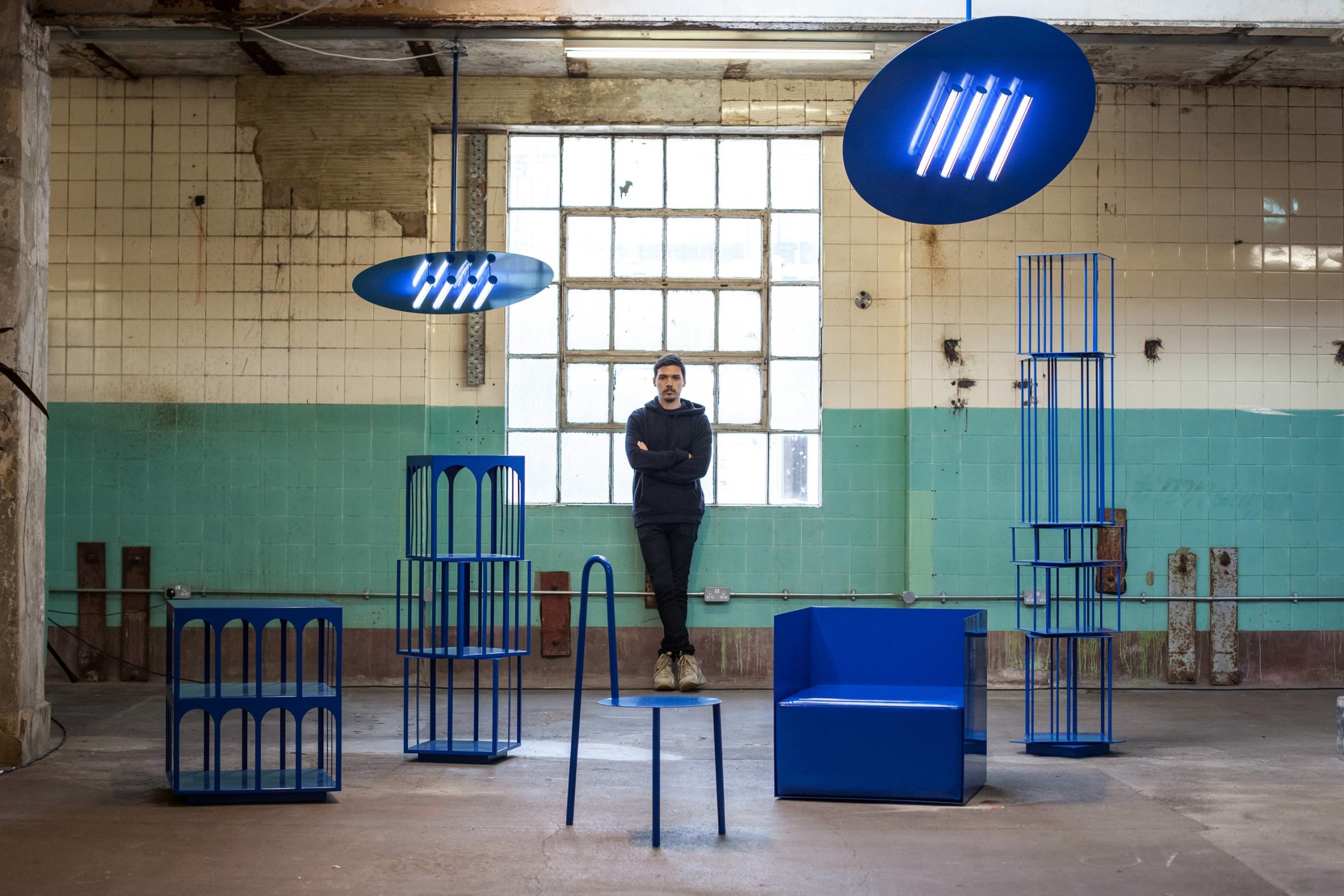 Courtesy of Harry Nuriev.
Courtesy of Harry Nuriev.
Whitewaller spoke with Nuriev about the different changes art and design can evoke.
WHITEWALLER: Can you tell us about what we can expect from your solo show “6 Fears” at Dallas Contemporary? What was the starting point?
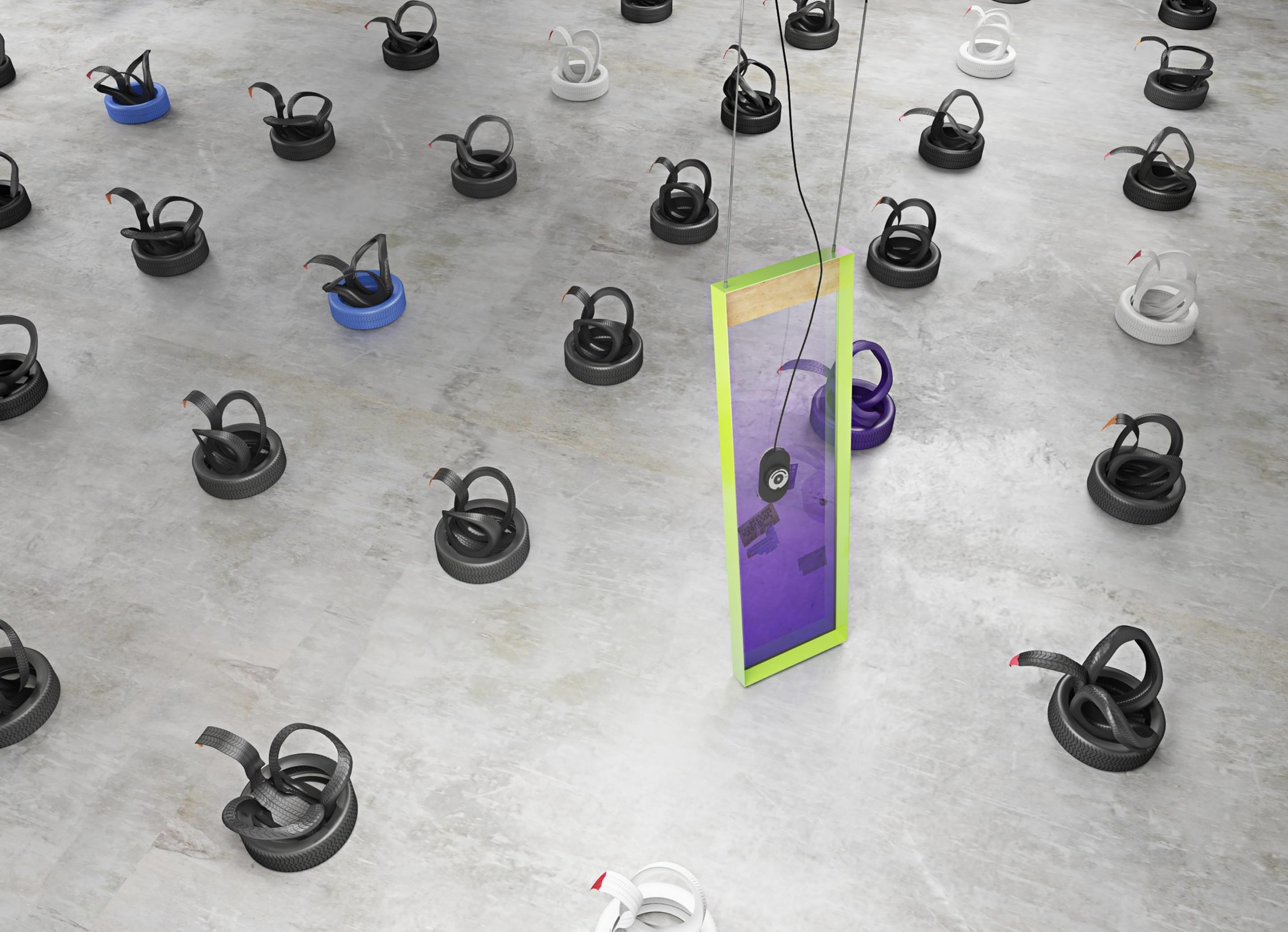 Rendering image courtesy of Harry Nuriev and Crosby Studios.
Rendering image courtesy of Harry Nuriev and Crosby Studios.
HARRY NURIEV: The project emerged from the idea of being lost in the city. Fear of technology; the garish commercial advertising you see on the street; fear, in the midst of so many people, that you are mediocre; the desire to destroy new and unknown things. And then there is robotics, and the fear of the singularity. At the same time, I try to think through how you locate yourself in a city, how to find the hidden places where the scale become more personal, where you can find yourself.
WW: We recently enjoyed seeing your work at Design Miami/ in December of 2017. There, you presented a series of sculptures inspired by Russian architecture and craft. How does your Russian heritage in uence your practice?
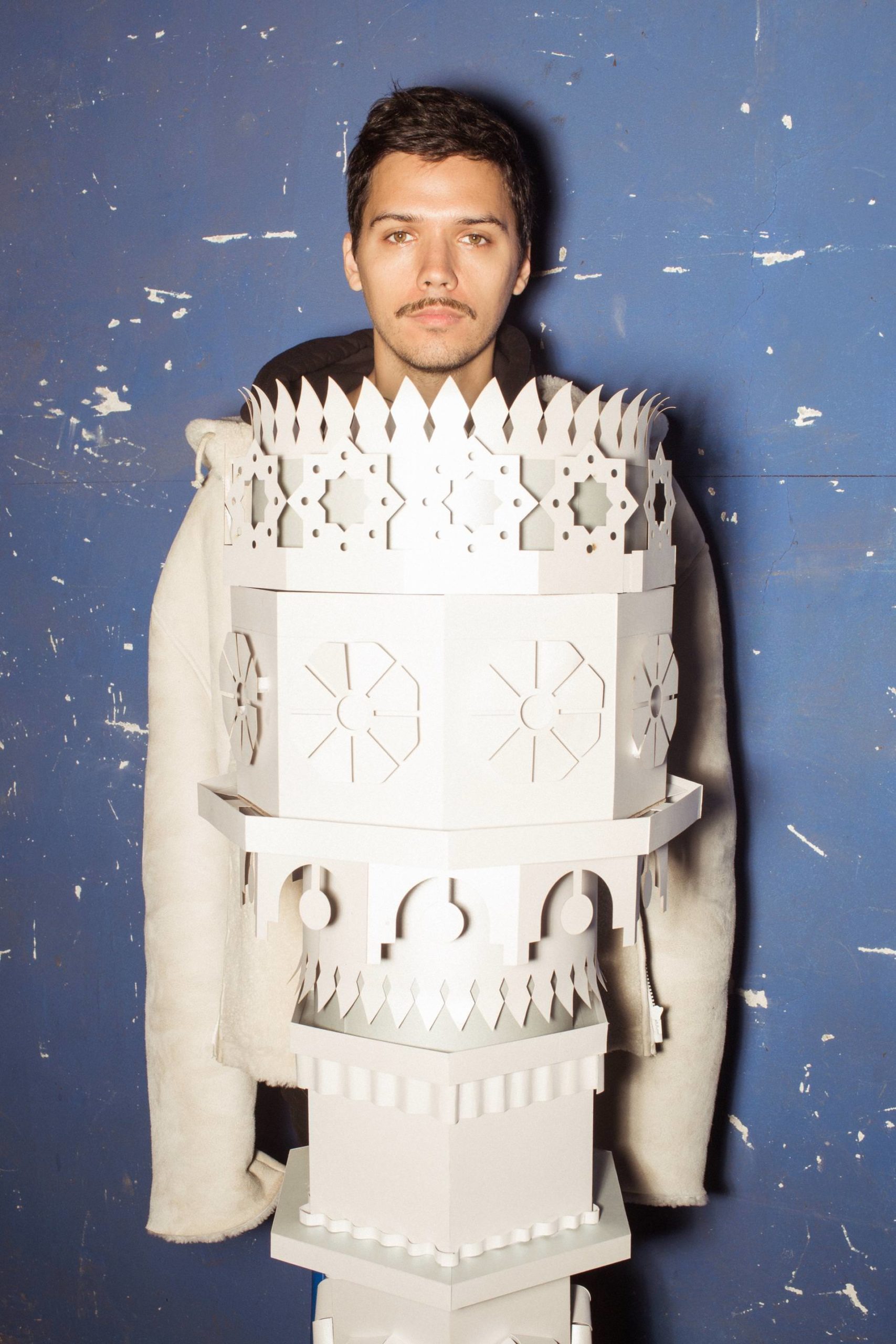 Courtesy of Harry Nuriev.
Courtesy of Harry Nuriev.
HN: Thank you very much. It’s the language I speak, and it’s the language in which I think. Having said that, I don’t consider it fundamental to my practice or my vision; it just happens to have been on my mind recently.
WW: In 2014 you founded Crosby Studios, an international design firm. What initially attracted you to the field of design?
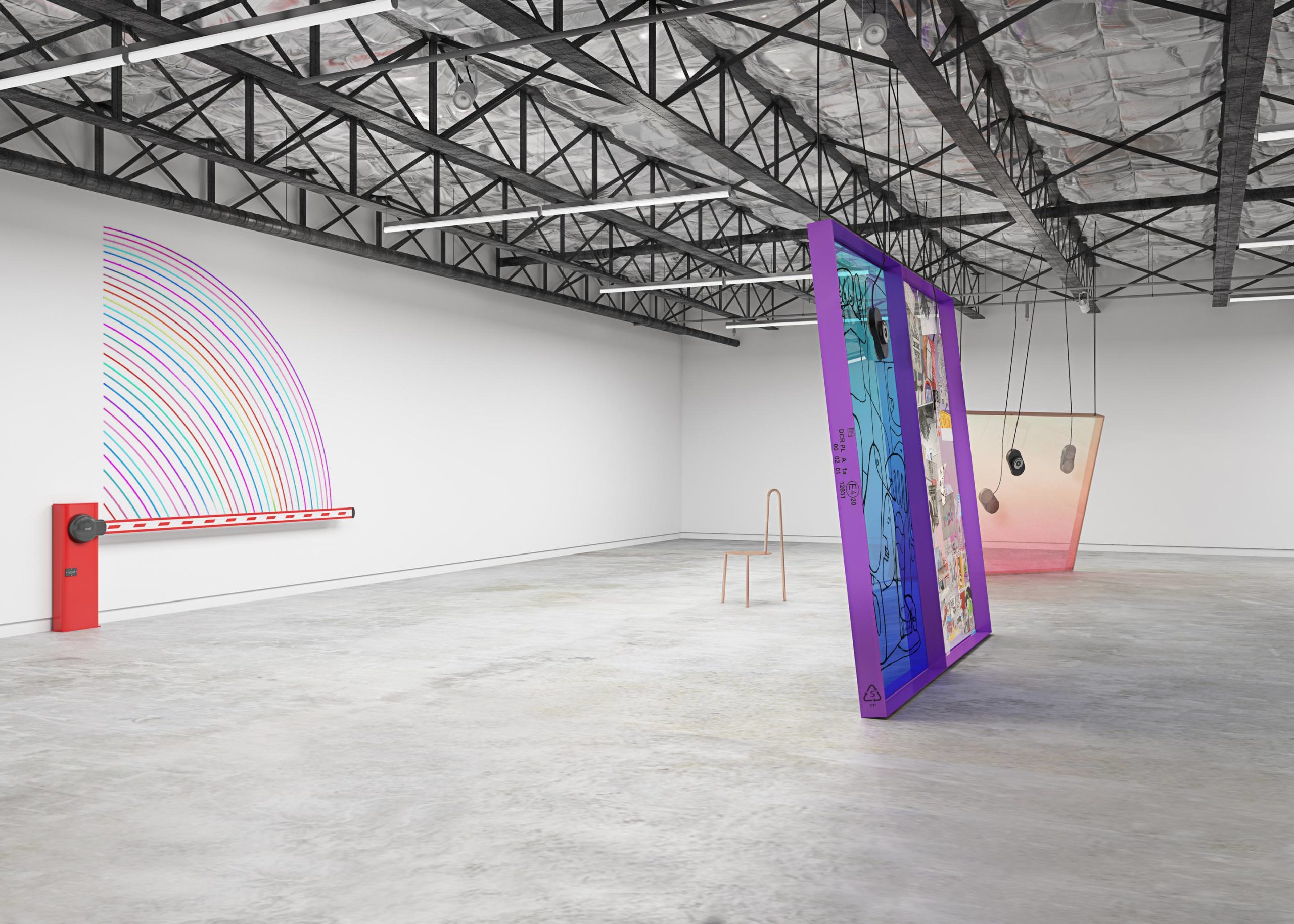 Rendering image courtesy of Harry Nuriev and Crosby Studios.
Rendering image courtesy of Harry Nuriev and Crosby Studios.
HN: I was unsure initially whether I wanted to pursue art or fashion or design. I just knew that I had something to add, and wanted to contribute something unusual to visual life. It progressed naturally from there.
WW: What materials have you been interested in experimenting with lately, in both your design and artistic practice?
HN: I have loved working with galvanized metal and acrylic. It’s always interesting to explore the potential of new materials and tease out their potential combinations.
WW: Outside of the opening of your show, what are you looking forward to in Dallas this April?
HN: I have more than eight shows this spring. It’s a lot of work, and has eaten up most of my time. My teams and I, in Moscow and New York, are working almost around the clock. It’s an amazing time for me right now, but it makes it difficult to think about anything else. Once I get there, I’m sure I’ll find plenty to enjoy, but I haven’t been able to look that far ahead!
WW: Are you exploring any themes or materials that are new to your practice?
HN: It’s a completely new experience and level of responsibility. When you’re working with furniture, you’re guiding a lifestyle, a way of being in a space. Design can change your mind, how you think and move, but art has the power to change something closer to the core of you, something bound up in your identity. Through design we speak with people. Through art, we speak with their souls.






